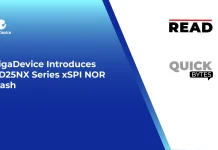Genetesis, Inc., a leader in the field of magnetocardiography (MCG), announced the formal launch of the MICRO2 trial, marked by the enrollment of the trial’s first patient at Ascension St. John Hospital in Detroit, Michigan, under Drs. Edouard Daher, MD, and Nishtha Sareen, MD, MPH, FACC, FSCAI.
MICRO2 (Magnetocardiography as a Noninvasive Diagnostic Strategy for Suspected Myocardial Ischemia with the Absence of Obstructive Coronary Artery Disease) is a multicenter, prospective, observational study powered to validate magnetocardiography’s ability to detect myocardial ischemia caused by underlying coronary microvascular dysfunction. The study will compare the diagnostic performance of MCG to a reference standard of invasively measured Coronary Flow Reserve (CFR). MICRO2 is expected to enroll at least 135 patients and will be conducted with the support of at least six enrolling sites – Ascension St. John Hospital, Cleveland Clinic, Hackensack Meridian Mountainside Medical Center, Saint Luke’s Health System Kansas City, The Christ Hospital, and University of Florida – and is funded by Genetesis, Inc.
Evidence clearly supports the recognition of CMD as a distinct clinical entity, but diagnosing CMD effectively poses a major challenge for the current standard of care, as traditional risk factors for cardiovascular disease, like atherosclerosis, have not proven to correlate with the presence of CMD. For patients seeking a diagnosis, the first step in their journey typically involves being classified as suffering from ischemia with no evidence of obstructed arteries (INOCA).
Also Read: SGS North America Announces Expansion of Biologics Testing Capabilities
“Many of the patients we speak to who suffer from CMD often describe a diagnostic journey that begins with being told their symptoms are non-cardiac due to a negative result on CCTA or invasive angiography. Unfortunately, these patients are being told something that is later proven to be untrue,” said Rhea Malhotra, Vice President of Product Development at Genetesis. “Offering these patients a 90-second diagnostic option for diagnosing ischemia that could be used at the beginning of this diagnostic journey would be a huge step forward in fixing this unmet clinical need today.”
INOCA is currently estimated to impact at least 4 million people in the United States today, with over 50% of these patients believed to suffer from some form of CMD. Worse still, there is overwhelming evidence demonstrating that these patients will see more physicians and have more hospitalizations than otherwise healthy people while suffering from measurably worse outcomes, both in terms of quality of life and long-term health. For reasons that are not entirely understood quite yet, the vast majority of these patients today are women.
The application of CardioFlux MCG for diagnosing these patients would represent a significant opportunity to reduce the cost and burden typically associated with a diagnosis without compromising on diagnostic accuracy, and if validated by MICRO2, could make the possibility of a diagnosis far more accessible than it currently is today.
SOURCE: PRNewswire




